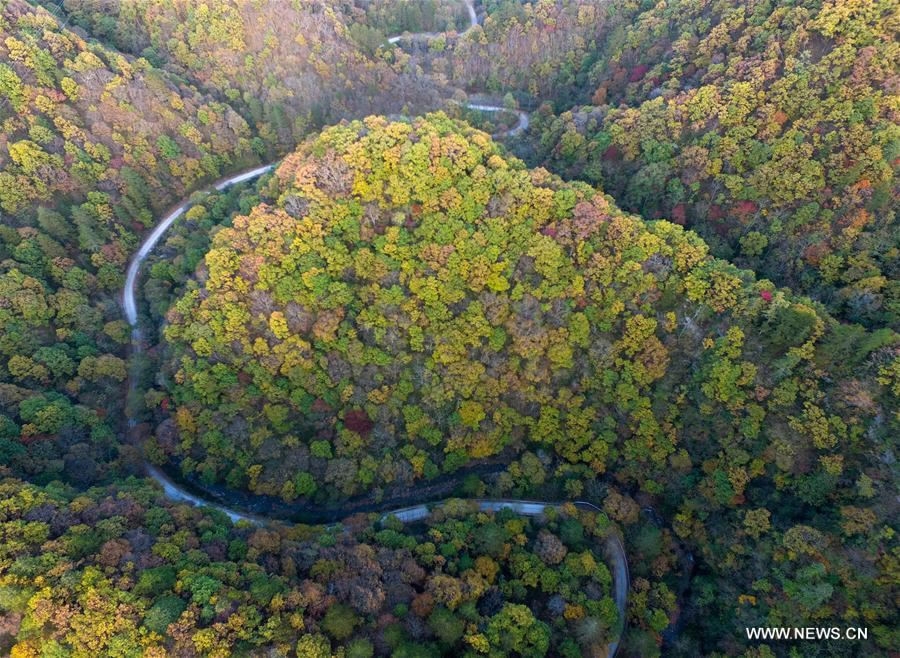
Politics
15:43, 22-Dec-2017
China in 2017: Laying the foundations for 'Beautiful China'
By Gong Rong

"The country should protect the environment like one protects one's eyes and treat the environment as one treats one's life." – Xi Jinping
China took a series of solid steps forward in green development in 2017 in an attempt to unravel the contradiction between economic growth and ecological conservation, following President Xi Jinping's call for greater efforts in environmental protection.
‘Beautiful China’
"The modernization that we pursue is one characterized by harmonious coexistence between man and nature," President Xi, also the general secretary of the Communist Party of China (CPC) Central Committee, said in his report to the 19th CPC National Congress in October.
The CPC also incorporated "Beautiful China" – a concept first written in the 13th Five-Year Plan – into its two-stage development plan for building a great modern socialist country by the mid-21st century. Xi said the goal of building a “Beautiful China” will be basically attained by 2035.

File photo shows scenery of Saihanba in Weichang Manchu and Mongolian Autonomous County in Chengde, northern China's Hebei Province. Saihanba is a combination of Chinese and Mongolian meaning "beautiful highlands." /Xinhua Photo
File photo shows scenery of Saihanba in Weichang Manchu and Mongolian Autonomous County in Chengde, northern China's Hebei Province. Saihanba is a combination of Chinese and Mongolian meaning "beautiful highlands." /Xinhua Photo
In 2017, efforts to build a “Beautiful China” were recognized by the world: On December 6, Saihanba Afforestation Community in northern China's Hebei Province received the United Nations' highest environmental honor – the Champions of the Earth award, for transforming degraded land into a lush paradise.
It took three generations of foresters to increase the forest cover from 11.4 percent to 80 percent. The reclaimed landscape now supplies some 137 million cubic meters of clean water to Beijing.
The transformation of Saihanba is the result of persistent effort which has set a great example in China's pursuit of ecological progress, Xi said.
Strengthened inspection
Since China rolled out its harshest-ever environmental protection law in 2014, the country has strengthened inspections to fight air, water and soil pollution.

An inspection team carries out environmental inspection work in Cangzhou, Hebei Province on August 19, 2017. /Xinhua Photo
An inspection team carries out environmental inspection work in Cangzhou, Hebei Province on August 19, 2017. /Xinhua Photo
The central government started high-level environmental inspections that have spread to 31 provinces. As of September 2017, four rounds of inspections had been carried out with more than 5,700 government officials held accountable and over 32,000 companies penalized.
China’s Ministry of Environmental Protection (MEP) has launched a one-year inspection campaign in Beijing, Tianjin, and 26 smaller cities since April 2017 in a bid to improve urban environments and tackle the problem of smog in northern China.
There have been notable changes, with people in Beijing experiencing more blue-sky days this winter. According to data released by the MEP on December 21, Beijing enjoyed good air quality for 80 percent of November, up from 43.3 percent in November 2016.
Smart routes to growth
China has also made efforts to expand the renewable energy market by promoting green sources such as wind and solar power.
China's installed capacity of clean energy has reached 660 gigawatts (GW), while 67 percent of the country’s total newly installed power capacity during the first nine months of 2017 was renewable energy, the National Energy Administration said.

Photo taken on October 27, 2017 shows the autumn scenery of Qinling Mountains in northwest China's Shaanxi Province. /Xinhua Photo
Photo taken on October 27, 2017 shows the autumn scenery of Qinling Mountains in northwest China's Shaanxi Province. /Xinhua Photo
China remains the "undisputed leader of renewable electricity capacity expansion," according to the International Energy Agency.
The UN Environment Programme also hailed China's progress, especially in the areas of electric transport, solar energy and the “sharing economy”, as a good example of sustainable development.
Since signing up to the Paris Agreement in 2016, China has reiterated its commitment to curb climate change while promoting global cooperation on the issue.
China’s steps won’t stop in 2018. More measures are expected from January 1 when the new Environmental Protection Tax Law will take effect, and the country will expand pilot reforms in ecological damage compensation nationwide.
Read more:

SITEMAP
Copyright © 2018 CGTN. Beijing ICP prepared NO.16065310-3
Copyright © 2018 CGTN. Beijing ICP prepared NO.16065310-3